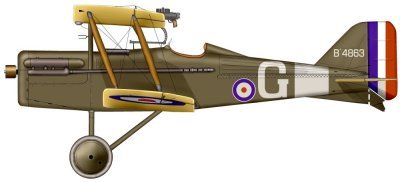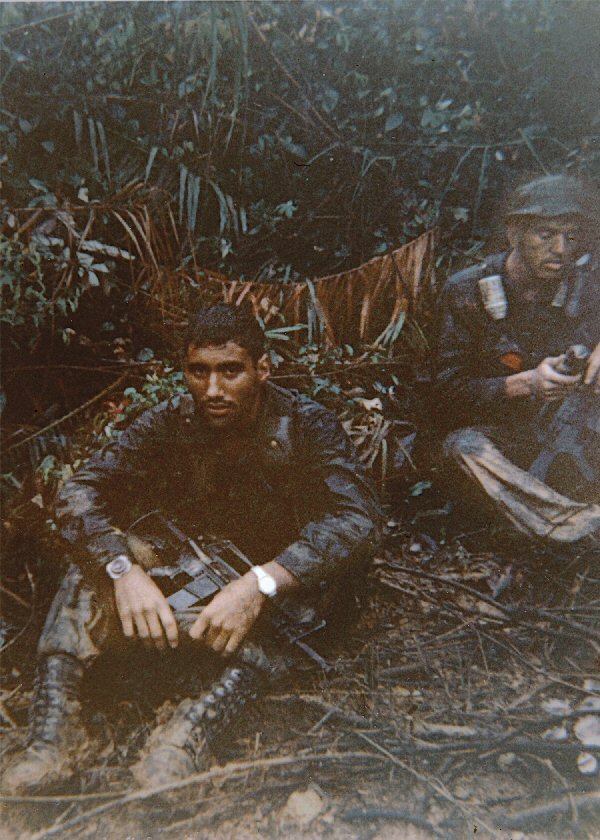|
Aces High (film)
''Aces High'' is a 1976 war film starring Malcolm McDowell, Peter Firth, Christopher Plummer and Simon Ward. The film, which is an Anglo-French production, is based on the 1928 play ''Journey's End'' by R. C. Sherriff with additional material from the memoir ''Sagittarius Rising'' by Cecil Lewis. It was directed by Jack Gold. The screenplay was written by Howard Barker. ''Aces High'' turns the trench warfare of ''Journey's End'' into the aerial battles fought above the Western Front by the Royal Flying Corps (RFC) in 1917. The film covers a week of a squadron where the high death rate puts an enormous strain on the surviving pilots. Many characters and plot lines are loosely based on those of ''Journey's End'': the idealistic new officer who is killed at the end, and whose sister is the girlfriend of his tough but alcoholic commanding officer, the kindly middle-aged second-in-command (known as "Uncle" by the younger officers) who is killed on a dangerous intelligence-gathering ... [...More Info...] [...Related Items...] OR: [Wikipedia] [Google] [Baidu] |
Jack Gold
Jacob M. "Jack" Gold (28 June 1930 – 9 August 2015) was a British film and television director. He was part of the Kitchen sink realism, British realist tradition which followed the Free Cinema movement. Career Jacob M. Gold was born in London, the son of Charles and Minnie (née Elbery) Gold. He attended University College London. After leaving UCL, he began his career as a film editor on the BBC's ''Tonight (1957 TV series), Tonight'' programme. Gold became a freelance documentary filmmaker, making dramas as a platform for his social and political observations. For television, his best known work is ''The Naked Civil Servant (film), The Naked Civil Servant'' (1975), based on Quentin Crisp's The Naked Civil Servant (book), 1968 book of the same name and starring John Hurt. He had previously directed the 1964 crime series ''Call the Gun Expert'' for the BBC. Other television credits include ''The Visit'' (1959), the BBC Television Shakespeare productions of ''The Merch ... [...More Info...] [...Related Items...] OR: [Wikipedia] [Google] [Baidu] |
EMI Films
EMI Films was a British film studio and distributor. A subsidiary of the EMI conglomerate, the corporate name was not used throughout the entire period of EMI's involvement in the film industry, from 1969 to 1986, but the company's brief connection with Metro-Goldwyn-Mayer and Anglo-EMI, the division under Nat Cohen, and the later company as part of the Thorn EMI conglomerate (following the merger with Thorn) are outlined here. History Headed by Bryan Forbes The company was formed after the takeover of Associated British Picture Corporation (ABPC) in 1969 by EMI, following the acquisition of Warner Bros.' shares in ABPC the previous year. At the time ABPC owned 270 ABC Cinemas, a half share in the ITV contractor Thames Television, Elstree Studios at Shenley Road, and had recently bought Anglo-Amalgamated, a film studio in which Nat Cohen had been a partner. EMI moved into film production with the foundation of a new company, EMI-Elstree. Bernard Delfont appointed writer-d ... [...More Info...] [...Related Items...] OR: [Wikipedia] [Google] [Baidu] |
Luftstreitkräfte
The ''Deutsche Luftstreitkräfte'' (, German Air Force)—known before October 1916 as (Flyer Troops)—was the air arm of the Imperial German Army. In English-language sources it is usually referred to as the Imperial German Air Service, although that is not a literal translation of either name. German naval aviators of the were an integral part of the Imperial German Navy (). Both military branches operated aeroplanes, observation balloons and airships. Founding The Imperial German Army created an experimental balloon company inspired by the American balloon corps they had seen while observing the American Civil War, with varying forms of organisation from 1884 to 1901 until a Balloon Battalion was finally formed. The rapid development of aeronautics led to trials of airships and the choice of rigid types built by Zeppelin and Schutte-Lanz. The first military aircraft to be acquired by the German Army entered service in 1910 and the first five aviation battalions were est ... [...More Info...] [...Related Items...] OR: [Wikipedia] [Google] [Baidu] |
Etiquette
Etiquette () is the set of norms of personal behaviour in polite society, usually occurring in the form of an ethical code of the expected and accepted social behaviours that accord with the conventions and norms observed and practised by a society, a social class, or a social group. In modern English usage, the French word ' (label and tag) dates from the year 1750. History In the third millennium BCE, the Ancient Egyptian vizier Ptahhotep wrote ''The Maxims of Ptahhotep'' (2375–2350 BC), a didactic book of precepts extolling civil virtues, such as truthfulness, self-control, and kindness towards other people. Recurrent thematic motifs in the maxims include learning by listening to other people, being mindful of the imperfection of human knowledge, and that avoiding open conflict, whenever possible, should not be considered weakness. That the pursuit of justice should be foremost, yet acknowledged that, in human affairs, the command of a god ultimately prevails in ... [...More Info...] [...Related Items...] OR: [Wikipedia] [Google] [Baidu] |
Combat Stress Reaction
Combat stress reaction (CSR) is acute behavioral disorganization as a direct result of the trauma of war. Also known as "combat fatigue", "battle fatigue", or "battle neurosis", it has some overlap with the diagnosis of acute stress reaction used in civilian psychiatry. It is historically linked to shell shock and can sometimes precurse post-traumatic stress disorder. Combat stress reaction is an acute reaction that includes a range of behaviors resulting from the stress of battle that decrease the combatant's fighting efficiency. The most common symptoms are fatigue, slower reaction times, indecision, disconnection from one's surroundings, and the inability to prioritize. Combat stress reaction is generally short-term and should not be confused with acute stress disorder, post-traumatic stress disorder, or other long-term disorders attributable to combat stress, although any of these may commence as a combat stress reaction. The US Army uses the term/acronym COSR (Combat Stress ... [...More Info...] [...Related Items...] OR: [Wikipedia] [Google] [Baidu] |
House Captain
The house system is a traditional feature of schools in the United Kingdom. The practice has since spread to Commonwealth countries and the United States. The school is divided into subunits called "houses" and each student is allocated to one house at the moment of enrollment. Houses may compete with one another at sports and maybe in other ways, thus providing a focus for group loyalty. Historically, the house system was associated with public schools in England, especially full boarding schools, where a "house" referred to a boarding house at the school. In modern times, in both day and boarding schools, the word ''house'' may refer only to a grouping of pupils, rather than to a particular building. Different schools will have different numbers of houses, with different numbers of students per house depending on the total number of students attending the school. Facilities, such as pastoral care, may be provided on a house basis to a greater or lesser extent depending on ... [...More Info...] [...Related Items...] OR: [Wikipedia] [Google] [Baidu] |
France
France (), officially the French Republic ( ), is a country primarily located in Western Europe. It also comprises of Overseas France, overseas regions and territories in the Americas and the Atlantic Ocean, Atlantic, Pacific Ocean, Pacific and Indian Oceans. Its Metropolitan France, metropolitan area extends from the Rhine to the Atlantic Ocean and from the Mediterranean Sea to the English Channel and the North Sea; overseas territories include French Guiana in South America, Saint Pierre and Miquelon in the North Atlantic, the French West Indies, and many islands in Oceania and the Indian Ocean. Due to its several coastal territories, France has the largest exclusive economic zone in the world. France borders Belgium, Luxembourg, Germany, Switzerland, Monaco, Italy, Andorra, and Spain in continental Europe, as well as the Kingdom of the Netherlands, Netherlands, Suriname, and Brazil in the Americas via its overseas territories in French Guiana and Saint Martin (island), ... [...More Info...] [...Related Items...] OR: [Wikipedia] [Google] [Baidu] |
Eton College
Eton College () is a public school in Eton, Berkshire, England. It was founded in 1440 by Henry VI under the name ''Kynge's College of Our Ladye of Eton besyde Windesore'',Nevill, p. 3 ff. intended as a sister institution to King's College, Cambridge, making it the 18th-oldest Headmasters' and Headmistresses' Conference (HMC) school. Eton is particularly well-known for its history, wealth, and notable alumni, called Old Etonians. Eton is one of only three public schools, along with Harrow (1572) and Radley (1847), to have retained the boys-only, boarding-only tradition, which means that its boys live at the school seven days a week. The remainder (such as Rugby in 1976, Charterhouse in 1971, Westminster in 1973, and Shrewsbury in 2015) have since become co-educational or, in the case of Winchester, as of 2021 are undergoing the transition to that status. Eton has educated prime ministers, world leaders, Nobel laureates, Academy Award and BAFTA award-winning actors, and ge ... [...More Info...] [...Related Items...] OR: [Wikipedia] [Google] [Baidu] |
Flying Ace
A flying ace, fighter ace or air ace is a military aviator credited with shooting down five or more enemy aircraft during aerial combat. The exact number of aerial victories required to officially qualify as an ace is varied, but is usually considered to be five or more. The concept of the "ace" emerged in 1915 during World War I, at the same time as aerial dogfighting. It was a propaganda term intended to provide the home front with a cult of the hero in what was otherwise a war of attrition. The individual actions of aces were widely reported and the image was disseminated of the ace as a chivalrous knight reminiscent of a bygone era. For a brief early period when air-to-air combat was just being invented, the exceptionally skilled pilot could shape the battle in the skies. For most of the war, however, the image of the ace had little to do with the reality of air warfare, in which fighters fought in formation and air superiority depended heavily on the relative availability ... [...More Info...] [...Related Items...] OR: [Wikipedia] [Google] [Baidu] |
Royal Flying Corps
"Through Adversity to the Stars" , colors = , colours_label = , march = , mascot = , anniversaries = , decorations = , battle_honours = , battles_label = Wars , battles = First World War , disbanded = merged with RNAS to become Royal Air Force (RAF), 1918 , current_commander = , current_commander_label = , ceremonial_chief = , ceremonial_chief_label = , colonel_of_the_regiment = , colonel_of_the_regiment_label = , notable_commanders = Sir David HendersonHugh Trenchard , identification_symbol = , identification_symbol_label = Roundel , identification_symbol_2 = , identification_symbol_2_label = Flag , aircraft_attack = , aircraft_bomber = , aircraft_el ... [...More Info...] [...Related Items...] OR: [Wikipedia] [Google] [Baidu] |
Western Front (World War I)
The Western Front was one of the main theatres of war during the First World War. Following the outbreak of war in August 1914, the German Army opened the Western Front by invading Luxembourg and Belgium, then gaining military control of important industrial regions in France. The German advance was halted with the Battle of the Marne. Following the Race to the Sea, both sides dug in along a meandering line of fortified trenches, stretching from the North Sea to the Swiss frontier with France, which changed little except during early 1917 and in 1918. Between 1915 and 1917 there were several offensives along this front. The attacks employed massive artillery bombardments and massed infantry advances. Entrenchments, machine gun emplacements, barbed wire and artillery repeatedly inflicted severe casualties during attacks and counter-attacks and no significant advances were made. Among the most costly of these offensives were the Battle of Verdun, in 1916, with a combined 700,000 ... [...More Info...] [...Related Items...] OR: [Wikipedia] [Google] [Baidu] |




